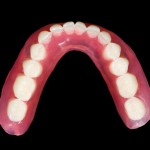
Dental implants are now in common use and a wide variety of implant designs are available varying in diameter, length and taper. Mandibular overdentures are considered to offer advantages over conventional dentures. Narrow-diameter implants ≤3.5 mm in diameter minimise the need for alveolar bone augmentation for some patients but may have mechanical and biological limitation in comparisons with regular diameter implants (>3.5–4.5 mm in diameter).
The aim of this review was to compare the use of narrow-diameter and regular diameter dental implants for supporting mandibular overdentures.
Methods
Searches were conducted in the Cochrane Central Register of Controlled Trials, Embase, Medline, Scopus, Web of Science, ClinicalTrials.gov and the World Health Organization international clinical trials registry platform databases. Randomised controlled trials (RCTs) and controlled clinical trials (CCTs) comparing stability and functional benefit in patients with mandibular overdentures supported on narrow or regular implants were considered. Two reviewers independently selected studies, extracted data and assessed study quality using the Cochrane Risk of Bias tool 2.0 (RoB2) for RCTs and the ROBINS-I tool for CCTs. Meta-analyses were performed for implant survival rate (ISR), marginal bone loss (MBL), patient satisfaction, and oral health related quality of life (OHRQoL).
Results
- 8 studies (4 RCTs, 4 CCTs) reported in 12 publications were included.
- Narrow implants ranged from 1.8 – 3.3mm in diameter, 10 – 15mm in length.
- Regular implants ranges from 3.6 – 4.5mm in diameter, 8.5 – 15mm in length.
- One study was rated as low risk, one at high risk and 6 at moderate risk of bias.
- Follow-up period ranged from 1 – 3 years.
- Mean implant survival rate for narrow implants 94.88% (range 86.44%–100%; n = 6) compared with 99.02% (range, 97.14%–100%; n = 6) for regular implants.
- Meta-analysis showed: –
- The relative risk (RR) for implant failure between narrow and regular implants was not significant RR= 0.98 (95%CI: 0.94 to 1.02) [6 studies].
- MBL did not significantly differ between narrow and regular implants, weighted mean difference (WMD) = 0.03mm (95%CI: −0.64 to 0.69) [5 studies].
- Patients’ overall satisfaction was significantly higher with narrow than regular implants for mandibular overdentures, WMD = 8.18 (95%CI: 5.83 to 10.53) [4 studies,250 patients].
- Narrow implants were associated with a significant improvement in OHRQoL compared to regular implants for mandibular overdentures, WMD = −4.36 (95%CI: −6.83 to −1.89) [3 studies, 276 patients].
- No study compared functional performance for mandibular overdenture between narrow and regular implants using objective parameters.
Conclusions
The authors concluded: –
Within short-term follow-up periods, narrow dental implants have acceptable treatment outcomes in terms of implant survival rate, extent of peri-implant marginal bone loss, and PROMs (general satisfaction and oral health-related quality of life.
Comments
No published protocol was available for this review, but the authors searched a good range of databases. Only 8 studies were included with only 6 studies contributing to the meta-analyses. Only one of the studies was considered to be at low risk of bias and the available data is relatively short term with only two studies following up patients for more than 2 years. While the findings suggest no differences between narrow and regular implants supporting mandibular overdentures the findings should be viewed cautiously as the quality of evidence is limited in quality and quantity and also short-term in nature. High quality well reported randomised trials involving larger numbers of patients and of longer duration are needed to provide better quality evidence to inform patients and clinicians.
Links
Primary Paper
Park JH, Shin SW, Lee JY. Narrow-diameter versus regular-diameter dental implants for mandibular overdentures: A systematic review and meta-analysis. J Prosthodont. 2023 Jun 27. doi: 10.1111/jopr.13726. Epub ahead of print. PMID: 37365991.
Other references
Dental Elf – 17th Jul 2023
Dental Elf – 21st Mar 2022
Dental Elf – Overdenture Blogs
